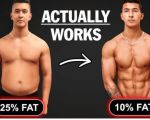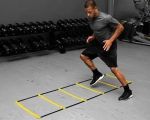Simple Tips to Improve Your Cardiovascular Health Through Exercise
For as long as I can remember, taking care of my heart has always been at the top of my mind. It wasn’t until a few years ago, however, that I truly understood just how vital cardiovascular health is to our overall well-being. It’s not just about feeling good in the moment—strong cardiovascular health impacts energy, mood, and longevity. That’s why I’ve focused much of my fitness routine on improving heart health, and I want to share some simple, effective tips that can help anyone looking to boost their cardiovascular fitness.
1. Start with Regular Cardio Workouts
One of the most impactful things you can do for your heart is to include regular cardiovascular exercise in your routine. Cardio exercises, such as walking, running, cycling, swimming, and dancing, get your heart rate up and help improve blood circulation. The best part? You don’t need to do hours of intense exercise each day to see improvements.
When I started focusing on cardiovascular health, I began with 30-minute sessions of moderate-intensity cardio, such as brisk walking or cycling. Over time, I gradually increased the duration and intensity as my stamina improved. I’d suggest aiming for at least 150 minutes of moderate-intensity or 75 minutes of vigorous-intensity cardio per week, which is the general recommendation from health experts.
2. Incorporate High-Intensity Interval Training (HIIT)
If you’re short on time but still want a solid workout that gets your heart pumping, High-Intensity Interval Training (HIIT) is a game-changer. HIIT involves alternating between short bursts of intense exercise and brief periods of rest or low-intensity exercise. It’s a fantastic way to improve cardiovascular health, increase endurance, and burn fat quickly.
I remember how skeptical I was at first, thinking it might be too intense for me. But after incorporating just two to three HIIT sessions per week, I started noticing significant improvements. I felt more energetic, my stamina increased, and I even saw progress in my overall fitness levels. HIIT doesn’t need to be complicated—you can start with simple exercises like jumping jacks, sprints, or burpees, and then gradually challenge yourself as you get fitter.
3. Strength Training for a Stronger Heart
It’s easy to think that cardio is the only way to improve heart health, but strength training can also play a crucial role. Resistance exercises, such as weightlifting or bodyweight exercises, help improve muscle mass and metabolism, and they contribute to overall heart health.
When I started incorporating strength training into my routine, I wasn’t expecting much impact on my heart health. However, I quickly learned that building muscle helps the heart pump blood more efficiently. Plus, strength training can improve blood pressure, which is a key factor in preventing cardiovascular disease. I typically aim for strength training two to three times a week, focusing on compound movements like squats, deadlifts, and push-ups. These exercises engage large muscle groups and are fantastic for heart health.
4. Stay Consistent with Exercise
The key to improving cardiovascular health isn’t just working out intensely once in a while—it’s consistency. In the past, I struggled to keep up with a regular exercise schedule, but over time, I realized that creating a habit was the only way to see real progress. Whether it’s a daily walk or hitting the gym several times a week, sticking to a consistent routine will help you build cardiovascular endurance and strength.
To stay on track, I recommend setting achievable goals and tracking your progress. For example, I set small milestones, like increasing my walking distance by 1 mile every week or adding an extra set to my weightlifting routine. These small victories kept me motivated, and they made the journey toward better heart health both enjoyable and rewarding.
5. Mind Your Diet to Support Cardiovascular Exercise
Exercise is incredibly important, but it’s only one piece of the puzzle when it comes to heart health. What you eat can have a profound effect on how your cardiovascular system functions, and it can either enhance or hinder your exercise efforts. I’ve found that focusing on a balanced diet rich in fruits, vegetables, whole grains, lean proteins, and healthy fats goes hand-in-hand with my exercise routine.
For example, foods like leafy greens, berries, nuts, and fatty fish are packed with nutrients that help lower blood pressure, reduce cholesterol levels, and improve heart function. When I cut out processed foods and made more heart-healthy choices, I noticed that I felt better during workouts and had more energy throughout the day.
6. Get Enough Rest and Recovery
As much as exercise is essential for heart health, rest is equally important. Overtraining without enough recovery time can lead to burnout, fatigue, and even injury. I’ve learned that my body responds best when I prioritize sleep, take rest days, and listen to how I feel.
Getting 7-9 hours of quality sleep each night helps my heart recover, repair, and rejuvenate. Additionally, active recovery days—where I do light activities like stretching or yoga—allow my muscles and cardiovascular system to heal while still keeping me engaged in movement.
7. Monitor Your Heart Rate
Tracking my heart rate during exercise has been an eye-opening experience. It allows me to see whether I’m pushing myself hard enough to get the benefits of cardiovascular exercise, without overexerting myself. I invested in a fitness tracker that monitors my heart rate and gives me feedback on whether I’m in the optimal zone for improving heart health.
For most people, exercising at 50-85% of their maximum heart rate is the sweet spot for improving cardiovascular health. I’ve found that paying attention to my heart rate helps me gauge the intensity of my workouts and adjust them as needed for maximum benefit.
8. Listen to Your Body
Above all, it’s important to listen to your body. There have been times when I’ve pushed too hard, thinking more is better, only to experience fatigue or soreness that set me back. If you’re just starting out, it’s crucial to ease into exercise gradually and avoid overdoing it. Your heart, like any other muscle in your body, needs time to adapt to the new demands you place on it.
Ultimately, the best exercise routine for cardiovascular health is one that you can stick with over time, one that makes you feel good and leaves you feeling energized instead of drained. Whether it’s walking, running, swimming, or lifting weights, what matters most is consistency, variety, and finding what works best for you.








